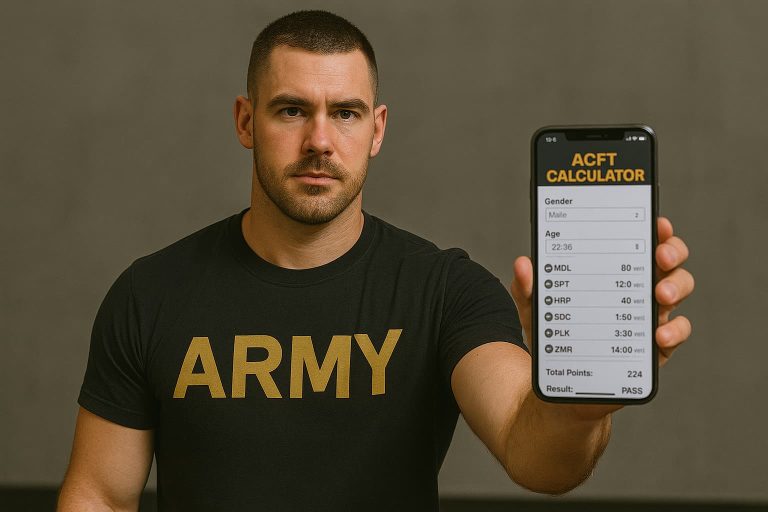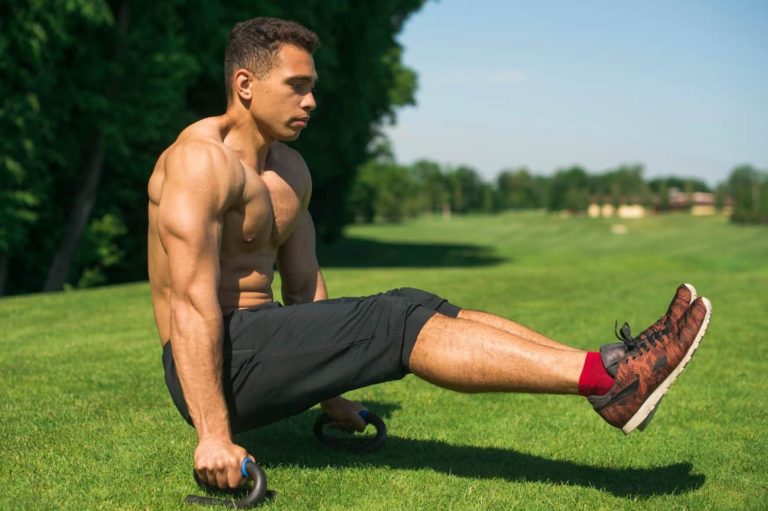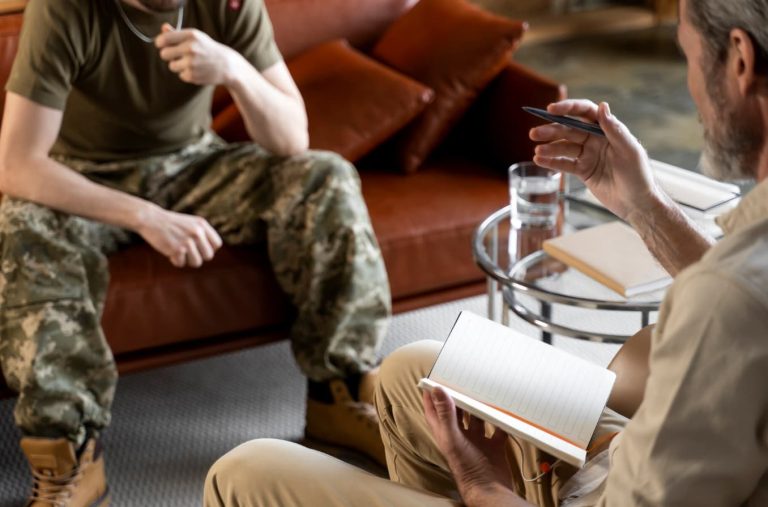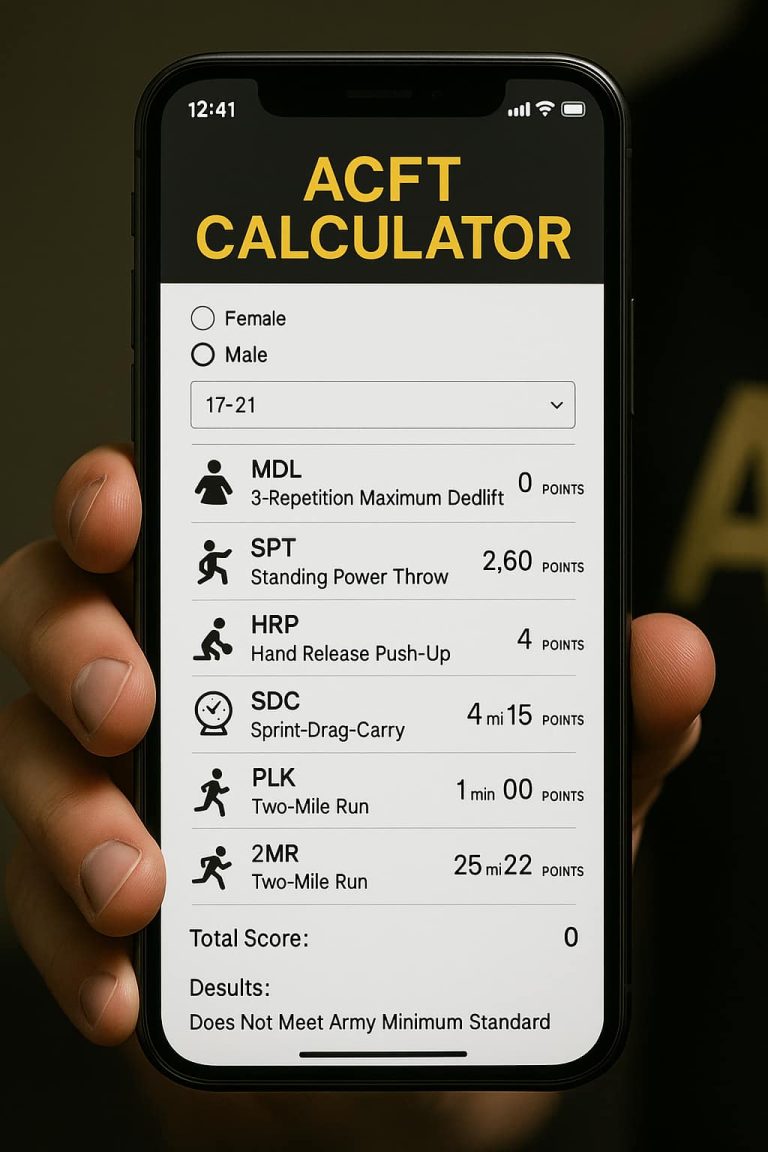What is the Army Combat Fitness Test? Everything You Need to Know
When I first heard about the ACFT, I’ll be honest – it sounded intense.
But after training hard and finally acing it, I realized how important it is not just for promotions, but for real combat readiness.
What is the Army Combat Fitness Test?
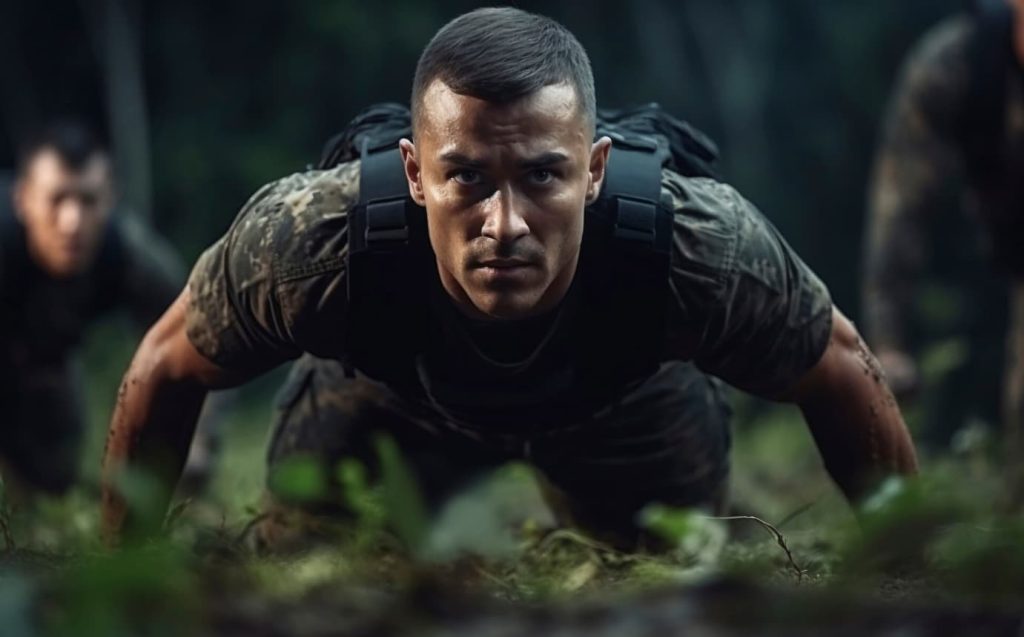
Let me break down everything you need to know about this test that’s changing how we think about Army fitness.
Why the Army Made the Switch?
For decades, we relied on the Army Physical Fitness Test (APFT) — push-ups, sit-ups, and a two-mile run.
It wasn’t bad, but let’s be real: when was the last time you had to do sit-ups in a combat situation?
The Army finally realized that our fitness test needed to actually prepare us for what we might face downrange.
The ACFT launched officially in 2022 after years of development and testing.
The big idea? Create a test that measures functional fitness – the kind of strength, power, and endurance that actually matters when you’re carrying gear, moving under fire, or hauling a wounded battle buddy to safety.
I remember my first sergeant explaining it perfectly: “This isn’t about looking good at the gym. This is about being ready when it counts.” That really stuck with me throughout my training.
What Makes the ACFT Different?
The Army Combat Fitness Test isn’t just a fitness test — it’s a combat readiness assessment. Every single event relates to something you might need to do in a real-world military situation.
Think about it: you might need to lift heavy equipment (deadlift), throw gear over obstacles (standing power throw), get up quickly after taking cover (hand-release push-ups), or carry supplies and wounded soldiers across difficult terrain (sprint-drag-carry). This test actually prepares you for those moments.
What I love most about the ACFT is that it doesn’t discriminate. Whether you’re infantry, logistics, or military intelligence, these are skills every soldier needs. It’s created a more universal standard of fitness across all Military Occupational Specialties (MOS).
Breaking Down the Six Events
Let me walk you through each event based on my own experience training for and taking the test.
1. 3-Repetition Maximum Deadlift (MDL)
This one starts the test, and honestly, it set the tone for me. You get three attempts to lift your maximum weight for three reps. The minimum is 140 pounds, but if you want to score well, you need to be pulling 340+ pounds.
I spent months building up my deadlift strength. Started with just the bar and worked my way up. The key is proper form — keep your back straight, drive through your heels, and don’t rush it. This event taught me that raw strength really matters in our profession.
2. Standing Power Throw (SPT)
You throw a 10-pound medicine ball backward over your head as far as possible. Sounds simple, right? Wrong. This event destroyed me the first few times I tried it.
The technique is everything. You squat down, explode up, and launch that ball like your life depends on it. I had to practice the motion over and over to get the coordination down. Now I can consistently throw over 12 meters, but it took serious work to get there.
3. Hand-Release Push-Ups (HRP)
These aren’t your standard push-ups. At the bottom, you have to lift your hands completely off the ground, then push back up. No cheating, no half-reps.
This event humbled me more than any other. I thought I was strong at push-ups until I tried these. The hand-release component forces you to actually go all the way down and eliminates any momentum. I went from thinking I could knock out 50 easy to struggling with 30. But with consistent training, I eventually hit 60+ reps.
4. Sprint-Drag-Carry (SDC)
This is the beast of the ACFT. You sprint 50 meters, drag a 90-pound sled backward 50 meters, do a lateral shuffle carrying two 40-pound kettlebells, then drag the sled forward 50 meters, and finish with another 50-meter sprint.
The first time I did this event, I thought I was going to die. It’s pure anaerobic torture. But it’s also the most realistic — imagine having to move heavy equipment or casualties under time pressure. I learned to pace myself just enough to maintain speed without completely gassing out.
5. Plank (PLK)
Gone are the sit-ups, replaced by a simple plank hold. Hold the position as long as possible, with a minimum of 2 minutes required.
Don’t let the simplicity fool you. Two minutes feels like forever when you’re shaking and your core is on fire. I built up my plank endurance gradually, adding 15-30 seconds each week. Now I can hold it for over 4 minutes, which has made a huge difference in my overall core strength.
6. Two-Mile Run (2MR)
The classic endurance event remains, but now it’s the finale instead of the grand finale. After completing five other events, this run hits different.
Running after the SDC is brutal. Your legs are already fatigued, and you have to dig deep to maintain pace. I had to adjust my running strategy completely — it’s not just about speed anymore, it’s about managing fatigue across all six events.
Understanding the Scoring
Each event is scored from 0-100 points, with 60 being the minimum passing score. Your total score can range from 0-600 points. Here’s what I learned about the scoring:
- 60-70 points per event: You’re meeting the standard, but there’s room for improvement.
- 70-80 points per event: You’re performing well and showing good fitness levels.
- 80-90 points per event: You’re exceeding standards and demonstrating excellent fitness.
- 90-100 points per event: You’re in elite territory — this is where you want to be for promotion competitiveness.
The scoring varies by age and gender, which makes sense. A 45-year-old female soldier has different standards than a 20-year-old male soldier, but everyone’s being challenged appropriately for their demographic.
For promotion points, scoring high on the ACFT can significantly boost your standing. In today’s competitive promotion environment, every point matters.
My Secret Weapon: The ACFT Calculator
Here’s something that made a huge difference in my training: I used the ACFT Calculator on https://armyacftcalc.com throughout my preparation to track my progress.
It’s free, easy to use, and way better than trying to calculate scores manually or dig through Army regulation tables.
Every week, I’d plug in my current performance numbers and see exactly where I stood.
It helped me identify which events needed the most work and track my improvement over time.
Seeing my total score climb from 450 to 550+ was incredibly motivating.
The calculator also helped me set realistic goals. Instead of just hoping to “do better,” I could see exactly what performance improvements would get me to the next scoring level.
For example, I could see that improving my deadlift by 20 pounds would boost my score by 10 points, which helped me prioritize my training.
Tips for Success
Based on my experience, here’s what actually works:
- Train the events specifically. General fitness isn’t enough — you need to practice these exact movements. The SDC, in particular, requires specific conditioning that you won’t get from regular PT.
- Focus on your weak points. Don’t just train what you’re already good at. I was naturally strong at running but weak at the deadlift, so I spent extra time in the weight room.
- Practice under fatigue. The events back-to-back create a unique challenge. Sometimes I’d do mini-ACFTs during training to simulate test conditions.
- Use the calculator regularly. Seriously, tracking your progress with actual numbers keeps you motivated and focused on specific improvements.
The Bottom Line
The ACFT isn’t just another test to pass — it’s preparing you to be a more capable soldier. Every rep, every second, every pound you lift is making you more ready for whatever the Army throws at you.
Yes, it’s challenging. Yes, it requires dedicated training. But that’s the point. We’re not just checking a box anymore; we’re building real combat readiness.
If you’re getting ready for your next ACFT, I highly recommend using the calculator to see exactly where you stand.
Set specific, measurable goals for each event, train consistently, and don’t get discouraged if progress feels slow at first.
Remember: the soldiers who excel at the ACFT aren’t necessarily the ones who were naturally gifted. They’re the ones who committed to the process, tracked their progress, and refused to settle for “good enough.”
Now get out there and crush your score. Your future self — and your battle buddies — will thank you for it.

